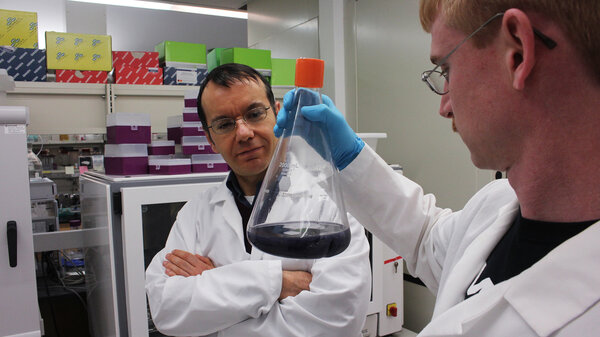It goes very unnoticeable how many plant natural products we consume in our daily life. The mint-flavored
menthol in toothpaste and mouthwash, aloe extract in soothing moisture lotion,
geranium extract in body wash, orange flavor in juice beverages, caffeine in all caffeinated drinks, and vanillin in almost all vanilla-flavored food. You name it. What if these plant natural products are no longer coming from plants? Decades of research in plant metabolism has led to detailed understanding in metabolic pathways that give rise to many plant natural products. Now researchers have started exploiting this knowledge, and implementing these pathways in microbes to produce targeted plant natural products. The idea is very clear. By doing fermentation instead for plantation, harvesting, and extraction, one can get the same final products, hopefully with much higher yield and purity. Natural products produced in such way have already existed on the market. For example, the specific flavor compound nootkatone, a sesquiterpene enriched in grapefruit peels, now can be produced in massive quantity from an engineered yeast strain expressing the terpene synthase that makes this compound in grapefruit (http://www.allylix.com/). Since the final product is exactly the same chemical, the next time when you grab a can of grapefruit-flavored juice, you would never be able to tell whether the flavor is from plants or from the engineered yeast. For some harder-to-get natural products, e. g. flavor compounds from Indian sandalwood, which is highly desirable in the perfume industry, it would be highly profitable and also beneficial to the environment, if one can come up with synthetic ways to produce them in microbes.
Metabolic engineering of microbes for producing high-value plant natural products is a emerging field both in academic research and industry. I would not be surprised to see more and more commodity natural products currently prepared from plants being replaced by the same molecules produced from engineered bugs.
The same topic was also recently covered on NPR, if you are interested.
http://www.npr.org/blogs/thesalt/2014/12/04/368001548/who-made-that-flavor-maybe-a-genetically-altered-microbe

Mattheos Koffas and his colleagues at Rensselaer Polytechnic Institute have developed
E. coli strains that can produce plant anthocyanins, the purple pigment compounds highly enriched in purple cabbage.

No comments:
Post a Comment